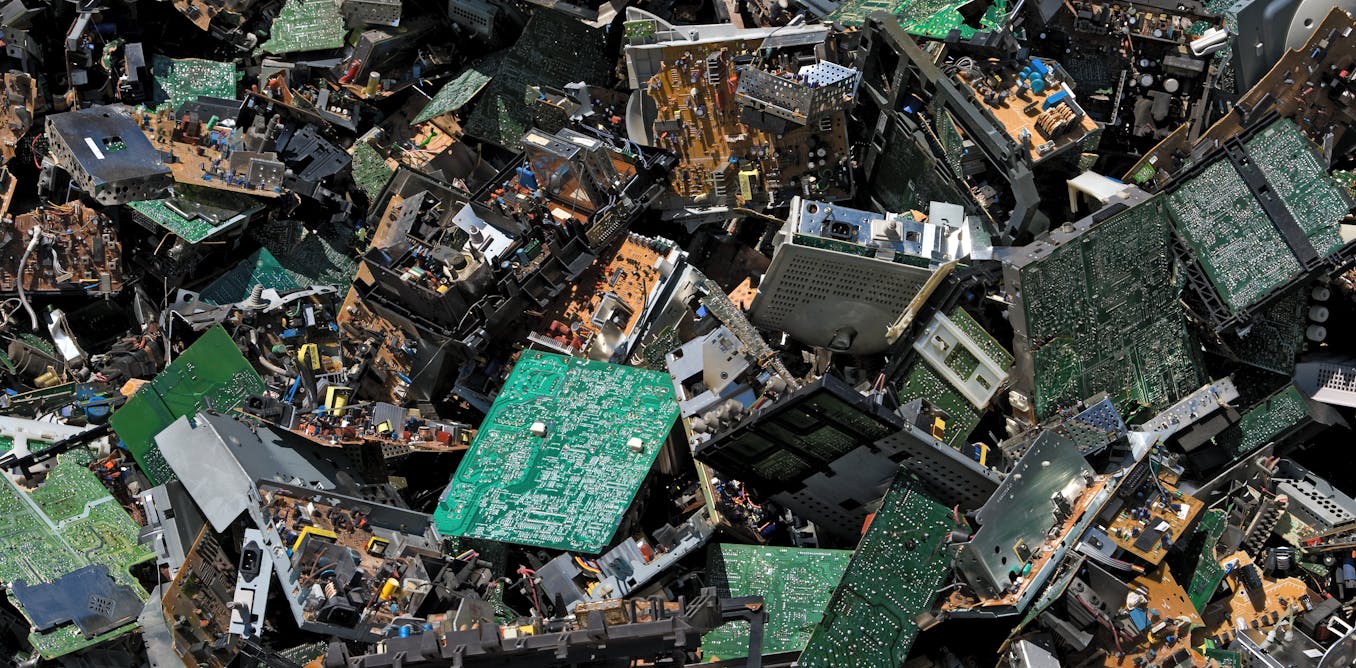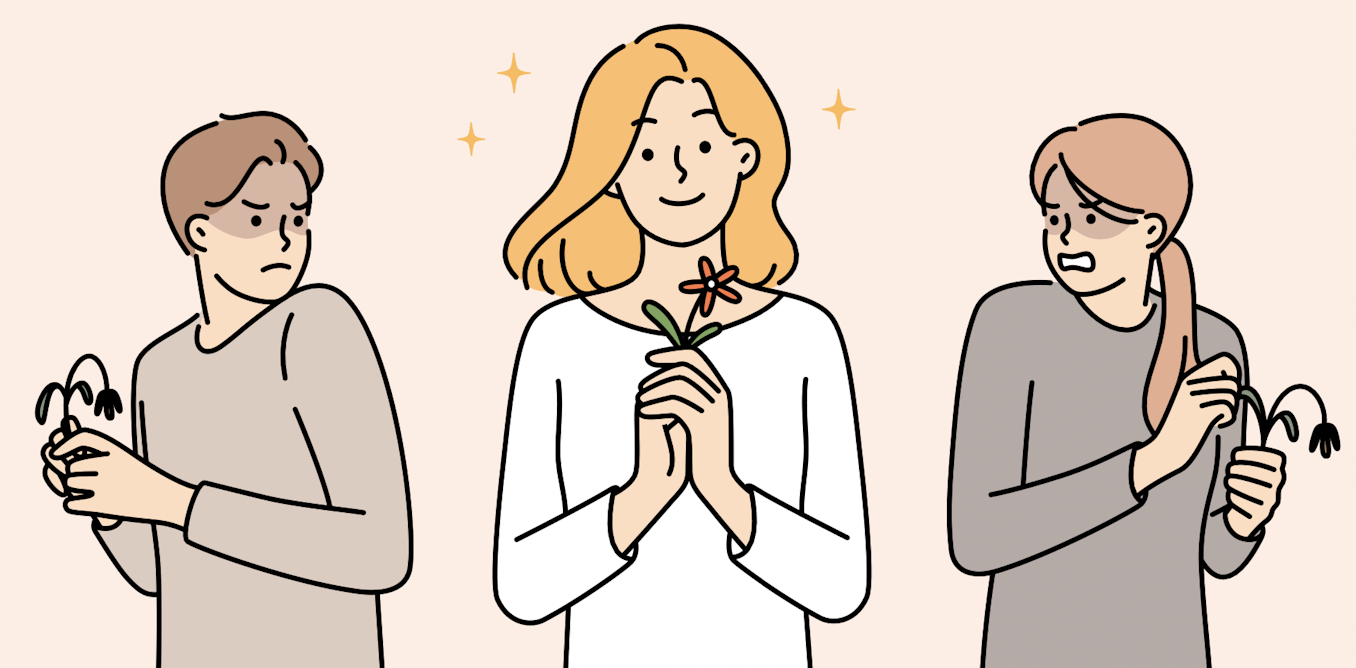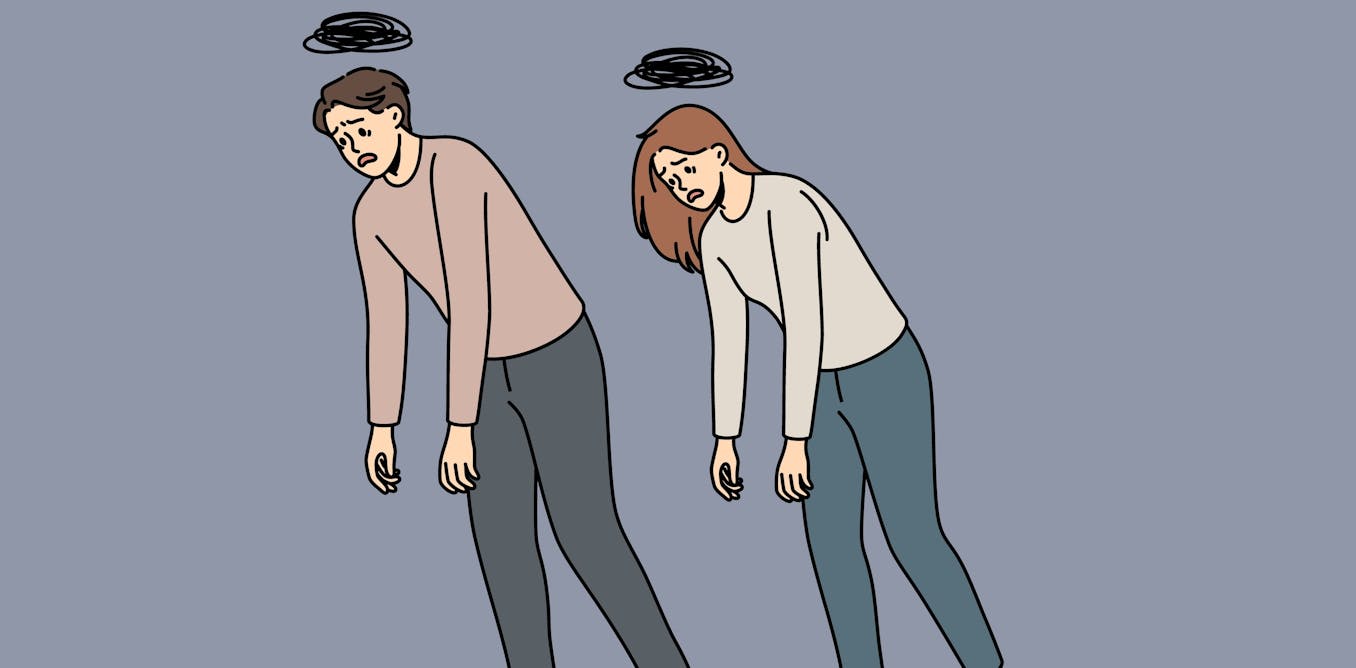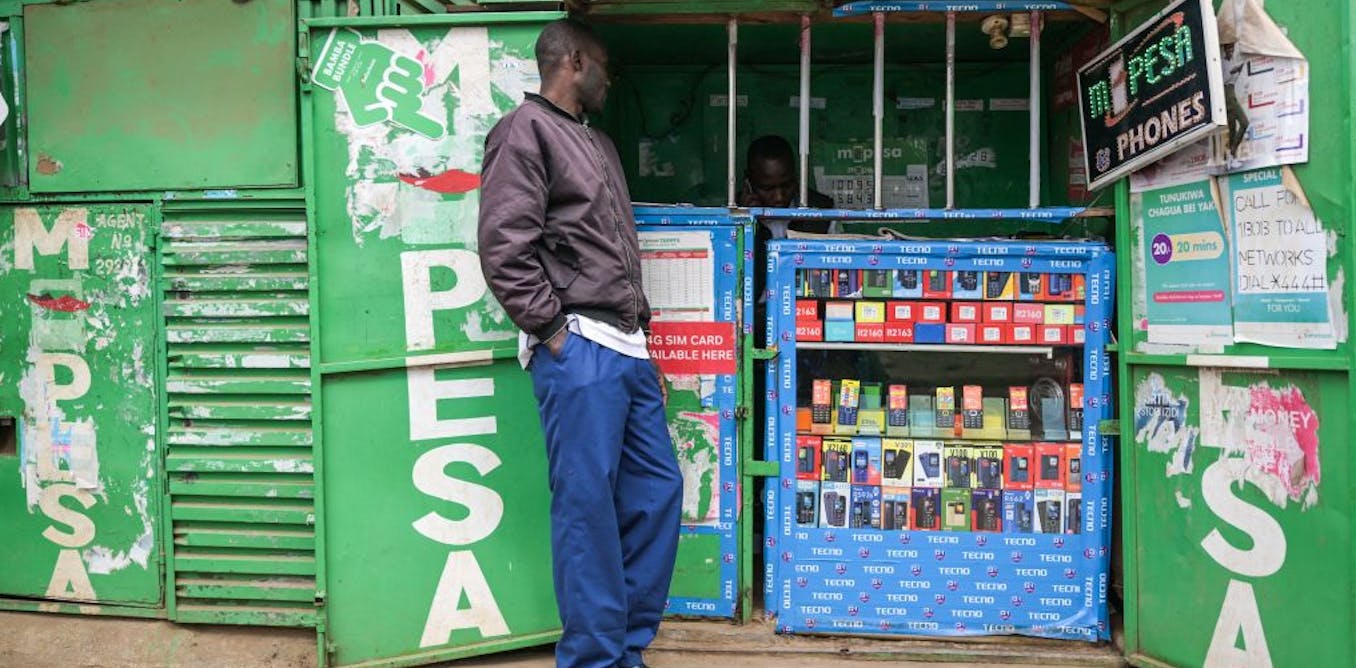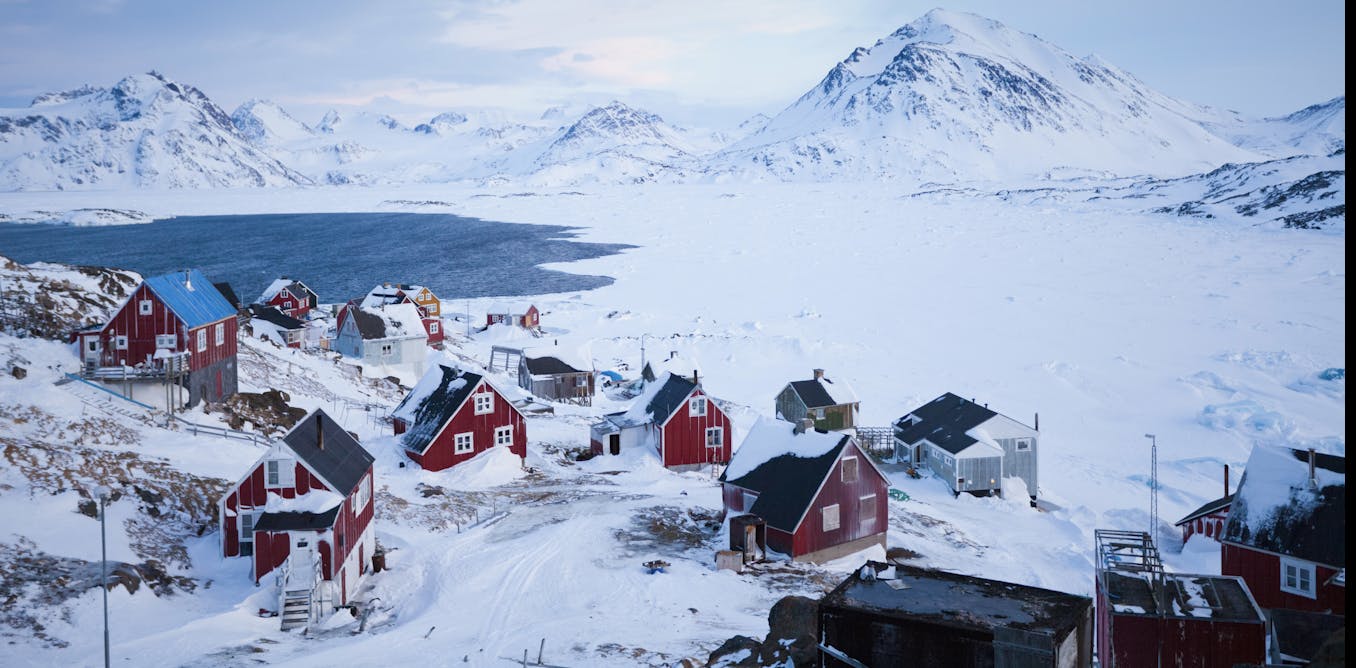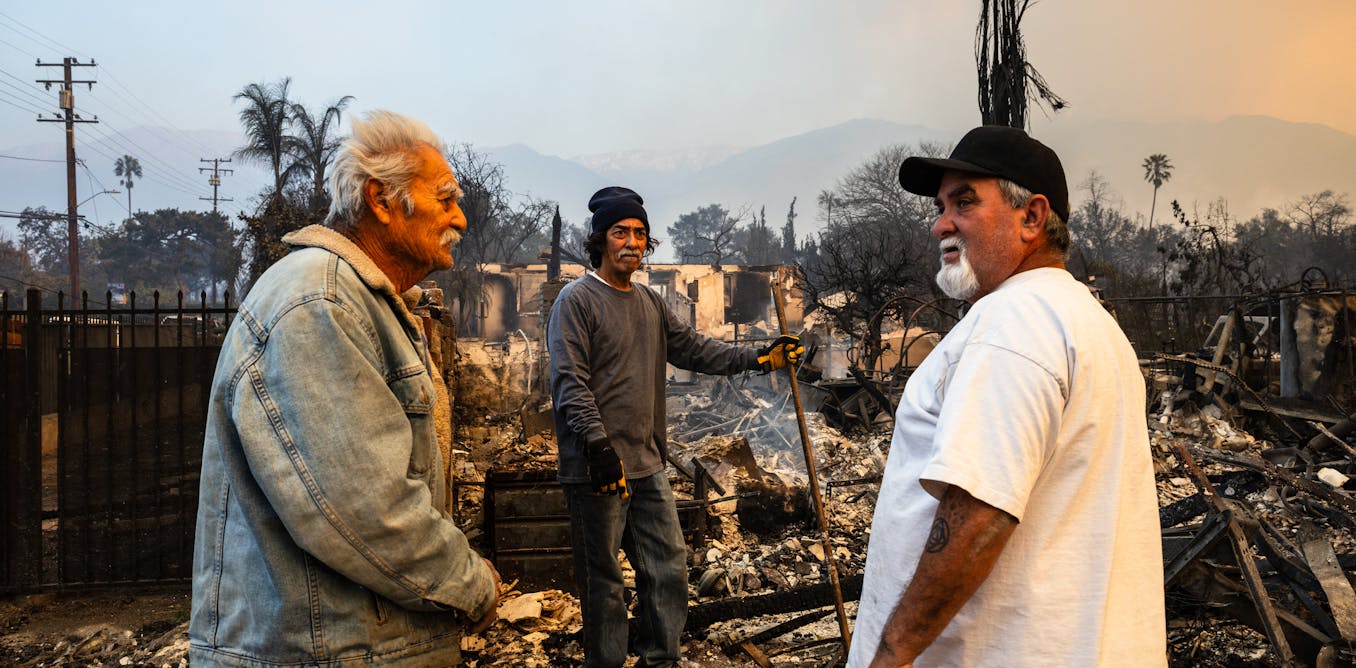Bangladesh is one of the largest jute producers in the world. Now, an invention from the capital Dhaka could make the fiber indispensable: Namely, the creation of a biodegradable foil from jute cellulose. This material could be used to replace the world’s disposable plastic bags with bags made from biodegradable jute products.
Jute is called the “golden fiber” in Bangladesh because it has a metallic shimmer and has brought local farmers modest prosperity. The leaves of the young plant can also be used to make salad and tea. But growing the plant is hard work. And it’s not always profitable.
Harvesting jute stalks is usually done by hand and involves cutting the stalks with a machete. Jute farmers Ayub Ali Akand and Afaz Uddin Akand from Hijli village in Bogura district in northern Bangladesh wade deep in water while working in the fields. The bundled jute stalks are transported for further processing. Eventually, they are made into jute fabric in the region’s large factories.
The scientist Mubarak Ahmad Khan has taken advantage of jute’s high cellulose content and developed a biodegradable foil. This is used to make the “Sonali Bag”, a sustainable replacement for the plastic bag.
The development of this innovative material from jute cellulose is promising in view of the worldwide pollution of the oceans and environment, from which even Bangladesh is not spared. But will the natural product have what it takes to prevail over the multi-billion dollar plastic industry? Would commercial success make it more attractive for Ajub and Afaz and their children to continue their arduous work as “fiber farmers”?
#documentary #dwdocumentary #bangladesh
______
DW Documentary (English): https://www.youtube.com/dwdocumentary
DW Documental (Spanish): https://www.youtube.com/dwdocumental
DW Documentary وثائقية دي دبليو (Arabic): https://www.youtube.com/dwdocarabia
DW Doku (German): https://www.youtube.com/dwdoku
DW Documentary हिन्दी (Hindi): https://www.youtube.com/dwdochindi
I started cultivating jute at the age of 12. In those days, jute was an important crop here. Then, jute cultivation became less important. Rice was the priority, and the focus shifted from jute to plastic. That could be about to change. Afaz and Ayub Akand cultivate a fiber
That could make the world a better place. Ayub has believed in this possibility ever since his daughter told him that jute could be turned into a material that feels and behaves like plastic, but is environmentally friendly. Ayub and his uncle Afaz farm the natural fiber according to a centuries-old tradition.
Could this painstaking process provide the fiber of the future? Northern Bangladesh, Bogura district 6 o’clock in the morning. An early start, to avoid the summer heat yesterday, temperatures reached 45 degrees celcius. Afaz sowed this jute in March. Now, it’s harvest time.
At the end of the Bengali month of Chaitra, we sow the seeds. Four months later, in the month of Ash’ar, we harvest. We then plant other crops on the same soil, such as aubergines or potatoes. We use dried jute sticks for many purposes, they bring in the most money.
We use them as climbing aids in vegetable fields. Or for the walls of houses. Today, however, this is becoming obsolete as bricks are used instead of jute. Bangladesh is a small country. But its farmers count among the world’s largest jute producers. Afaz lives in the village of Hijli.
He is one of the wealthier people in the village. His annual income, he says, is the equivalent of 5000 euros. Afaz has four sons. One is also a farmer, another one is a driver, one is living in Malaysia as a migrant worker and the other is an engineer. I am 75 years old.
When Afaz was young, the slogan “Use jute not plastic: handmade in Bangladesh” was popular in parts of Europe. But Afaz says he’s never heard of it. In the 1980s, the jute bag from Bangladesh became a symbol of the environmental movement. Back then, it was known as a scratchy, resilient natural material.
“Use jute, not plastic” was a rallying cry. Now, the fight against plastic is more urgent than ever. In the village of Hijli, scrap metal and plastic are collected for recycling. People are paid in edible nuts. Could jute eventually replace plastic? Who are the people who cultivate the plant, now?
What role does jute play for them? Overall, jute cultivation has advantages. We hardly earned anything from rice this year. But we still grow rice for our own consumption. And we feed the rice straw to the cattle. The price farmers receive for jute fluctuates considerably.
Some years, proceeds from sales fail to cover production costs. The government is trying to counteract this. The market price is high right now, farmers are interested again. And we want to support them. In the current season, our department has provided them with seeds and fertilizer free of charge. This creates incentives,
The farmers have to invest less and can make a bigger profit. My name is Tuli. I am working as an assistant officer at the Department of Agricultural Extension, Gabtoli, Bogura. The fiber feels thick and strong. It will be a good yield this year!
The harvested jute stalks are left to lie in the field for three days until all the leaves have fallen off. What follows is the unpleasant part: the green stalks must rot. The musty water attracts insects and bacteria that are good for the jute, and help the fermentation of the plant.
But it’s bad for human skin, and causes itching, says Afaz. Today it is bearable and, says Afaz, he is used to it, anyway. Other challenges are more daunting: I like growing jute. Especially the jute sticks, they sell very well and don’t require much work.
But when it’s too dry, we have a problem rotting the green jute sticks. In the past it was easier, we used to do it everywhere, in waterholes and rivers. There’s a river nearby, but now it doesn’t have enough water. So now we use ponds that are normally used for fish farming.
I have a pond close to Ayub’s pond. Climate change is making everything harder. Extreme weather conditions are disrupting ecosystems throughout South Asia, says Tuli. And jute farmers feel the effects firsthand. My ancestors already knew that we have very loamy soil here. It only needs a little rain to retain moisture. On sandy soil,
The jute plant would not survive more than ten days without rain. But that type of soil is rare here. Here, it rains fairly reliably every fifteen to thirty days in summer. So our jute is not damaged. Unlike cotton or rice, which need constant water, jute does not require artificial irrigation.
Afaz says that he’d never heard of a biodegradable plastic-like material made from jute – until Ayub’s daughter told him about it. He uses a conventional plastic sheet to protect his plants. I put the plastic sheet on top to prevent the mud from getting in and sticking to the fibers.
Depending on the quality of the fibers, the jute has to soak in water for twelve to fifteen days, so that it starts to rot. If the plant was already very ripe when it was harvested, I can take it out again after just eight to ten days.
In Ayub’s pond, right next door, the jute sticks are almost ready. Over time, the fibers can be removed from the stem by applying light pressure. But this one isn’t ready yet, I still have to press too hard… I think it’ll take another four or five days.
In Hijli, Ayub is known as the “model farmer”. He grows everything, from oranges to jute. And his family makes him proud. His daughter Atiya hopes to go to university. Atiya would not want to become a jute farmer, even if she could. Jute used to be very important for Bangladesh, says Atiya,
Pulling out an old banknote. I bring it because of the symbol. The farmers are separating the fiber from the jute and the Padkori, they are separating the two. It is our national crop you know, so the note symbolizes these things, so I bring it for you.
The jute fiber’s color that is washed from the river water is golden: “sonali ash”, we Bengali call it “sonali ash”, that is golden fiber. It is our national crop, because we export it to other countries and we get dollars, the currency. Until the middle of the 20th century,
Jute was the world’s most important textile fiber after cotton. To this day, most of the world’s jute production still comes from this region. Alluvial soil. A climate that is humid and hot. Jute has been harvested and processed here for centuries. The British colonial rulers took the jute grown here
And sold it all over the world. The highest-quality fibers have a golden color. These are said to grow best near rivers. That’s why many jute farmers live by rivers. Or in the middle of rivers, on islands called “chars”. The Char Baita lies in the middle of the Jamuna River,
Which originates in the Himalayas as the Brahmaputra River. Aminul Islam is a jute farmer here. Hey brother, did you also plant jute this season? No, not this year. I love life on the island. But I live on the mainland because of the robbers and goons.
Every day, I come out here in the morning and leave in the evening. I love the nature here, the air is fresh and calming. There’s so much to do on the island, so many opportunities. On the mainland, I have no land and nothing to work with. “River pirates.”
That’s what Aminul calls the people who attacked and seriously injured his brother. He shows us the scars from the knife wounds. He tells us that the pirates stole his cows. Crime is not the only thing that makes life hard on the chars. In the rainy season, it floods over twice.
So we move the cows to the mainland on boats. Within two or three days, everything here is under water. Then we climb up to the tin roof of the house and lay out wooden planks, and we just live up there. Aminul shows how high the water reached in recent years.
Some chars even disappear completely, for a time. Two-hundred people live on this river island. Without electricity or solid ground under their feet. Their jute plants are resilient, too: They can withstand flooding for a good two weeks. But even the robust jute plants have their limits. The jute back there is totally ruined.
Because of the extreme flooding, we couldn’t harvest quickly enough, and they died. The flood lasted for almost three weeks! The leaves, everything was ruined. There are no fibers! When the water comes and the plant remains underwater for too long, it turns black and is no good.
Only the golden, shimmering fibers are really worth anything. Even if the plants are only half submerged with water, the fibers that come out are of low quality. We get a lower price on the market, because they are discolored or even black. To prevent this, jute farmers on the chars have devised a system
That Aminul is proud of. Leaving the island is not an option; they have nothing on the mainland. The river is both a curse and a blessing for the jute plants. The water nourishes them with minerals, but threatens them with mud. The river water is murky.
The stream carries a lot of soil and clay, and these substances stick to the jute fibers, degrading quality and causing the jute to blacken. However, if the river water is channeled into a pond or a canal where the water is clear and fresh, the jute remains undamaged and retains its golden color.
So they have created artificial canals and waterholes. This is water that comes from the river. All the impurities in the mud have settled to the bottom of the waterhole. So the water is clear, and that’s how you can still get the golden color. Otherwise, there’s no chance of getting good quality fibers.
Yet another problem is impacting the Baita river island. If there’s too much plastic around, then it harms the crops. So we gather it and burn it. That solves the problem. Now people want to use less plastic. In the past, bags were made out of jute.
Now we’re going back to jute shopping bags, sacks etc. People are fed up with plastic. Two hundred kilometers downstream, there are people who want to solve the plastic problem. With the help of jute. In the capital, Dhaka, scientists are working on the “Sonali Bag Project.”
Translating as the ‘Golden Bag,’ it looks and feels like a plastic bag, but is made from cellulose derived from jute. It’s the invention of Bangladeshi scientist Dr. Mubarak Ahmad Khan. Protective suits and masks have also been produced using this new ‘bioplastic.’ The main raw material is dried jute fiber.
Then we find the cellulose, because the main ingredient of the Sonali Bag is cellulose. We made this cellulose from jute caddies. Then we put it into the reaction tank. In that reaction tank we have to set up the temperature, pressure and time. For the full reaction. And then we find this solution.
The exact formula is a secret. And, says Dr. Khan, the Sonali Bag has suffered some setbacks: it was just about to go into mass production when the Covid pandemic hit. Sewing bags from this jute polymer is also still a problem: the producers don’t have access to the right machines.
Using jute for fiber-reinforced composites has already been proven to work: Dr Khan has been experimenting with the material for years. His jute-reinforced polymer mixture also has a name: “Jutin”. I have to do something! Every scientist has the mind, the destination: I want to go there, that is the destination
It sounds like the perfect fiber. So why hasn’t the environmentally-friendly jute revolution happened, by now? And what does the government, which commissioned the Sonali Bag experiment, make of this? We ask Mohmmad Abul Kalam at the Ministry of Textiles and Jute. This is absolutely a noble idea, Dr. Mubarak Ahmad Khan
Is working on that, you already talked to him. But there are some issues, actually, that need to be addressed before going for the mass production. Plastics. An industry that is blocking jute farmers’ expansion. And, increasingly, jeopardizing their very existence. The weekly meeting of the jute farmers of Hijli.
Two of Afaz’s brothers are also here today. They tell us that plastic causes a lot of damage to their crops. This plastic is very harmful. When it burns, sticky, dangerous residues remain in the soil. Jute, on the other hand, decomposes easily. And it fertilizes the soil.
Plastic takes years to decompose, and when we plant rice, it no longer grows well if the soil is poisoned. They would be glad to grow more jute and thus produce more natural fibers. But conditions have to improve. Many people, including Ayub’s uncle Haider, are unhappy: That’s what we want!
We also think about it all the time, jute is really profitable. But we simply don’t have any more waterholes where we can leave the stalks to rot, it’s a real crisis! There are so many things we could do! We used to have more of them.
Now they are leased by the government to people who are farming fish. We are not allowed to plant or rot our jute there. Wherever there is water be it ditches or canals now they are all used for fish farming. Our hands are tied. That’s why they have created their own artificial ponds.
These experienced farmers make the hard work look easy. Having rubbed mineral oil on his body before getting into the stinking water to relieve the itching, Ayub loosens the jute fibers by hitting the stems. And this is how you wind it up. Although the cultivation process is tiring, jute has many benefits.
When it is young we can eat it. Once we’ve extracted the fibers, we make money from it. We use dried jute sticks as firewood. All this makes up for the hard labor. So, even though jute cultivation is painful, it brings us lots of benefits.
When jute is still very young, its leaves are used in cooking and are very healthy, Ayub’s wife Alo says. The green vegetables are full of vitamins, healthy, and jute leaves ensure that we build up our immune system. Jute has changed our luck since it’s currently being sold at a good market price.
It costs less to produce compared with other crops. We can recover the production expenses by selling the dried stalks alone. If I grow jute in a field, I can earn two and a half times more than what I would earn with rice. That’s why jute cultivation is a profitable crop for us farmers.
It takes three days for the jute bundles to dry in the sun. Ayub and Afaz then sell them to wholesalers who pick them up directly in Hijli. To sell their jute, many farmers travel to the small town of Sonatola. It’s one of the largest jute markets in the region.
The highest price for a kilo of jute today is 80 taka, they say. That’s about three-quarters of a dollar. Six, six, Seven, seven, …count slowly. Wholesalers buy jute, then deliver it to the mills. Hey, we have to make five kilos less! There are three categories of jute: first, second and third rate quality.
That determines the price I pay. I buy good quality jute at a high price. This is medium quality. Get me the good one! That is low quality! Here! First class! The best! It’s tight, everything is ok! Clean! Soft, smooth. This one is rough, very different, it’s from the floods!
Wholesalers often store the jute in warehouses in order to increase demand from the mills ? and thus drive up the price. In recent years, the government has closed down several jute mills, which were said to be unprofitable. Tens of thousands were left unemployed.
There are plans to modernize the industry, according to the ministry. The privately-owned Hassan Ali Jute Mill in Bogura sources jute from all over the country and produces it in three shifts, 24 hours a day, 7 days a week. The conditions are bad. The temperatures, hellish. dust from the fibers creeps into the body.
Exports go to India. The neighboring country is the world’s largest producer of jute. But they still need imports to supplement their own harvest. Products include sacking, delicate textiles, and a burlap sometimes called “hessian”. Natural jute fabrics may not be very soft, but they are durable and highly breathable.
Production manager Mohammed Rahman tells us that the material was already being used in the 18th century in Germany in the region of present-day Hesse. The so-called “Hessian” goes back to Germany, where soldiers’ uniforms used to be made of jute. This was then adopted by the British army.
And they then called the fabric “Hessian”. Over 800 companies in Bangladesh now manufacture jute products, and that number is growing. More awareness of jute’s environmental sustainability could be created worldwide. Global interest would really help, say the Hijli farmers. Germany is one of the pioneers in the industrial revolution.
If they were to import jute from our country and sign deals with the government, we could produce more of the golden fiber and supply it. It would inspire us to harvest more, and a lot of farmers would come forward to cultivate jute. The main challenge I think is the price fluctuation.
There’s no certainty. If the government put a system in place to guarantee that it would buy the jute, as it already does with rice, then I think this would mitigate the risks. Will ‘use jute, not plastic’ make a comeback? The Hilji farmers hope so. But it’s up to others to make it happen.
Until then, Afaz will continue farming as best he can. Today, he finds himself at the market, in the evening. When I get a good harvest and earn a good amount of money, I buy sweets for the children at home. I say to myself ? eat more, don’t think about money today.
The harvest that brings in the most money makes me the happiest! When I sell my harvest at the market, I forget all the hard work. It motivates me to keep working. And then I’m even happier!
Video “Bangladesh: Could jute jump start the eco-revolution? | DW Documentary” was uploaded on 12/27/2023 by DW Documentary Youtube channel.



